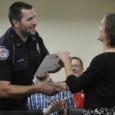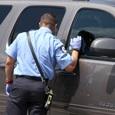Take Action to Prevent Heatstroke: You Can Save a Life

Summer is my favorite season. I love hot weather, cookouts, beach trips and long walks in the sun. But since working at Safe Kids, I’ve started to think of the hotter months a little differently. Why? Because of heatstroke.
Heatstroke is a condition that occurs when the body isn’t able to cool itself quickly enough and the body temperature rises to dangerous levels. Children are at great risk for heatstroke because a child’s body heats up three to five times faster than an adult’s. When the internal body temperature reaches 104 degrees, children’s organs start to shut down. And when it reaches 107 degrees, the child can die.
Working at Safe Kids, I get alerts every time a child dies from heatstroke after being left in a hot car. It’s heartbreaking. The majority of the time, 82 percent, the parent doesn’t realize the child is in the car. This occurs either if the parent forgets the child is in the car, or if the child gains access to the car and becomes trapped (like choosing to hide in the trunk during a game of hide-and-seek).
Last year, a child died from heatstroke in a car 30 times. So far this year I haven’t received an alert yet and we’d love to keep it that way. It will take all of us working together to spread the word and be on the lookout for kids left in hot cars. Here are some tips we can all take.
Take Action
We can reduce the number of deaths from heatstroke by remembering to ACT.
A: Avoid heatstroke-related injury and death by never leaving your child alone in a car, not even for a minute. And make sure to keep your car locked when you’re not in it so kids don’t get in on their own.
C: Create reminders by putting something in the back of your car next to your child such as a briefcase, a purse or a cell phone that is needed at your final destination. This is especially important if you’re not following your normal routine.
T: Take action. If you see a child alone in a car, call 911. Emergency personnel want you to call. They are trained to respond to these situations. One call could save a life.
Additional Resources
If you want more resources on how you can help prevent heatstroke, we’ve got you covered.




